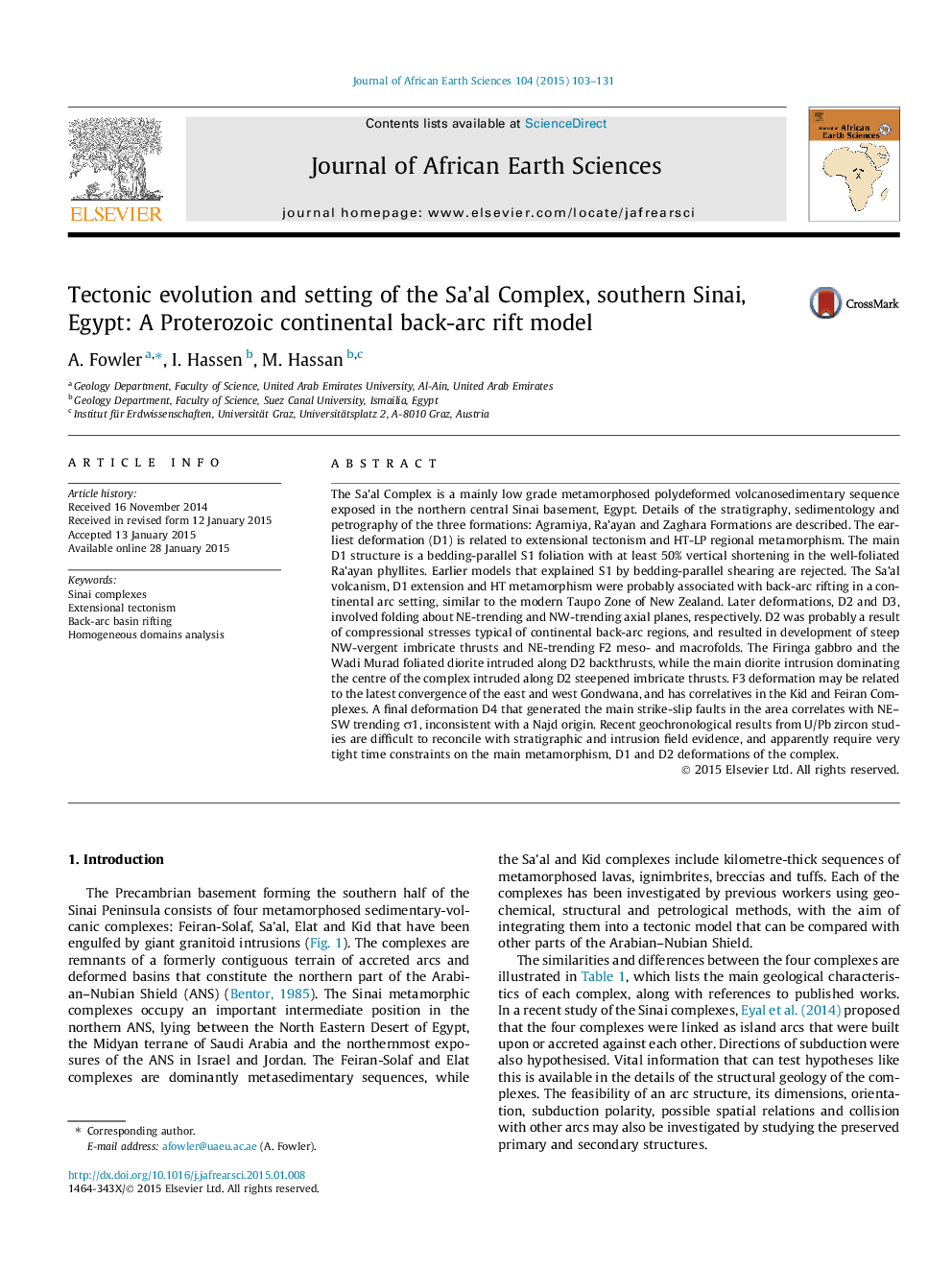| Article ID | Journal | Published Year | Pages | File Type |
|---|---|---|---|---|
| 4728543 | Journal of African Earth Sciences | 2015 | 29 Pages |
•The D1 deformation in the Sa’al Complex is a NNW–SSE tectonic extension not thrusting.•The dominant deformation is D2 involving mainly NNW-wards imbricate thrusting.•D1 and D2 were probably related to opening and closing of a back-arc rifting.
The Sa’al Complex is a mainly low grade metamorphosed polydeformed volcanosedimentary sequence exposed in the northern central Sinai basement, Egypt. Details of the stratigraphy, sedimentology and petrography of the three formations: Agramiya, Ra’ayan and Zaghara Formations are described. The earliest deformation (D1) is related to extensional tectonism and HT-LP regional metamorphism. The main D1 structure is a bedding-parallel S1 foliation with at least 50% vertical shortening in the well-foliated Ra’ayan phyllites. Earlier models that explained S1 by bedding-parallel shearing are rejected. The Sa’al volcanism, D1 extension and HT metamorphism were probably associated with back-arc rifting in a continental arc setting, similar to the modern Taupo Zone of New Zealand. Later deformations, D2 and D3, involved folding about NE-trending and NW-trending axial planes, respectively. D2 was probably a result of compressional stresses typical of continental back-arc regions, and resulted in development of steep NW-vergent imbricate thrusts and NE-trending F2 meso- and macrofolds. The Firinga gabbro and the Wadi Murad foliated diorite intruded along D2 backthrusts, while the main diorite intrusion dominating the centre of the complex intruded along D2 steepened imbricate thrusts. F3 deformation may be related to the latest convergence of the east and west Gondwana, and has correlatives in the Kid and Feiran Complexes. A final deformation D4 that generated the main strike-slip faults in the area correlates with NE–SW trending σ1, inconsistent with a Najd origin. Recent geochronological results from U/Pb zircon studies are difficult to reconcile with stratigraphic and intrusion field evidence, and apparently require very tight time constraints on the main metamorphism, D1 and D2 deformations of the complex.
Graphical abstractFigure optionsDownload full-size imageDownload as PowerPoint slide
